"Captain's Lament" / Stephen Graham Jones
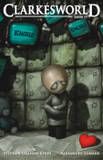 from Clarkesworld Magazine #17 / February 2008
from Clarkesworld Magazine #17 / February 2008
Reviewed by: Vince A. Liaguno
Stephen Graham Jones is a thinking man’s writer who possesses the uncanny ability to lay all of his cards out on the table yet keep readers from seeing his hand. His cerebral works tease and titillate the little grey cells, and you’re never quite sure if you’ve gotten everything he’s packed into his refreshingly highbrow prose. If you haven’t read his last novel - 2006’s Demon Theory - then you’ve missed out on a work of genuine literary innovation with its wildly experimental film treatment-within-a-novel narrative and annotated celebration of pop culture.
“Captain’s Lament,” from the equally academic-leaning Clarkesworld Magazine, reminds readers what true originality is in an often cliché-ridden genre. Using a first-person narrative structure that captivates from the opening paragraph, “Captain” tells the story of a hospitalized merchant marine whose convalescence is the nautical equivalent of being landlocked. As the protagonist’s agonizing period of recovery draws out and he begins to sink deeper into himself, a (seemingly) kindly nurse offers the venerable seaman a glimmer of hope and understanding. But before the reader is able to peg this as a run-of-the-mill creepy nurse tale, Jones deconstructs his story – twisting and turning the narrative so that by the time readers find themselves revisiting familiar urban legend territory, they’ve been thrown gloriously off guard.
As in Demon Theory, nothing is what it really seems in “Captain’s Lament.” Jones richly layers the story with alternate truths and realities that will catch readers blissfully unaware – and perhaps leaving them scratching their heads with thoughts of “Did he just…?” In Jones’ macabre fictional worlds, it’s all up for grabs. And the best part is he tells us everything up front - with a sly wink.
Read “Captain’s Lament” by Stephen Graham Jones in Clarkesworld Magazine.
Generation Dead / Daniel Waters
 Hyperion / May 2008
Hyperion / May 2008
Reviewed by: Martel Sardina
Romero zombies are unfeeling monsters with limited intelligence who hunger for human flesh. Who could have ever imagined a world where zombies and humans would want to be friends? Daniel Waters, that’s who. In Generation Dead, a strange phenomenon is occurring all over the country. Dead teenagers aren’t staying dead. And now those termed “living impaired” or “differently biotic” are seeking a way to fit in to a society that doesn’t want them.
At Oakvale High, Phoebe, a pale-skinned Goth, has never been a member of the “in” crowd. As the new school year begins, Phoebe finds herself drawn to Tommy Williams, one of the “living impaired.” Tommy, the leader of the “DB” kids at Oakvale, is trying to break the Romero stereotype by going out for the football team. The punishing blows he’s taken on the football field do not faze Tommy. However, society at-large does not view being “DB” as an asset. To the religious zealots, it is an abomination. A sign of the apocalypse. Integration is not something that the living should have to tolerate.
Phoebe’s friends, Adam and Margi, can’t understand her interest in Tommy for very different reasons. Margi’s fear of the “living impaired” stems from guilt over the past. Adam’s experiences with Tommy on the football team left him with a new understanding of how the “DB” kids live. But gaining this understanding doesn’t make Adam feel any better about Phoebe and Tommy’s budding relationship. Adam is scared for Phoebe not only because of the way the “DB” kids are treated, but also because he thinks of her as more than a friend.
Phoebe and friends, along with a select group of the “DB” kids are participating in a research project run by the Hunter Foundation. The goal – to further integration and find ways to acclimate the “DB” population into society. Waters’ prose is witty and sharp. In the following passage, Skip Slydell, an author/activist, who has come to speak to the project participants.
“Transformation always requires radical action. If Elvis Presley had not taken the radical action of singing a style of music traditionally sung by black people, we may never have had the transformation that rock and roll enacted on modern society. If Martin Luther King had not taken the radical action of organizing and speaking around the cause of civil rights, we may have never undergone the transformation from an oppressive state to one of freedom and equal opportunity for all. And that transformation is not yet complete. You kids are living –or unliving, as the case may be –proof of that…Radical action coupled with radical response. Only then can we get true change. There was a reason that I used strong words with you, impolite words like ‘zombie’ and ‘undead’ and ‘blood bag’ and the reason was not because I wanted to be offensive. I used those words because right now they are radical words, and I wanted to provoke a radical reaction in you.”
Waters spends a great deal of the novel’s word count building compelling characters and allowing the story to unfold through dialogue as well as internal monologue rather than subjecting readers to lengthy bits of exposition. For the most part, the pacing of story not an issue. However, while the story comes to a satisfying resolution, the change in pace at the transition to the story’s climax felt a bit rushed.
While Generation Dead is being marketed to a young adult audience, like the Harry Potter series, it should have crossover appeal to adults as well. Adults readers should be impressed by Waters’ take on understanding and combating racial discord and the use of zombies as a means to get teens to think about what they can do to put an end to propagated stereotypes.
Pre-order Daniel Waters' Generation Dead.
"The Target Audience" / Cherie Priest
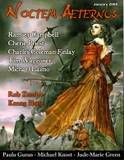 from Noctem Aeternus Magazine/ January 2008
from Noctem Aeternus Magazine/ January 2008
Reviewed by: Vince A. Liaguno
Seattle detective and Idaho transplant Leatus Balter is called in to investigate the bizarre electrocution death of an elderly woman. While attempting to notify next of kin, he discovers an odd DVD in the woman’s purse and finds a disturbing commercial steeped in religious rhetoric and malevolent imagery. With the help of his partner Gary, Leatus soon learns that the victim’s son has had an uncanny run of bad luck – mixed with good fortune in the form of insurance payouts – when his brother, estranged wife, and mother all meet their untimely ends within months of one another.
Enter Tara Henkle, an insurance adjuster from the insurance company that’s paying out big bucks to the dead octogenarian’s son, now MIA. In true damsel in distress fashion, Henkle leads Leatus to believe that there some connection between the series of deaths and the odd commercial found in the dead woman’s purse. Worse, she fears she is next.
The commercials end up being state-of-the-art prayers, the high-tech versions of lighting votive candles. Priest takes shot at the idea that money can buy everything – including God’s attention. The slicker the Super Bowl commercial, the more Doritos Frito Lays sells, right? It’s an interesting premise that Priest wisely veils in some vague religious mysticism, secret Vatican papers, and academic research that reduces divine petitioning to a numbers game. It’s enough to make the story’s protagonist doubt the whole purpose of maintaining law and order when God’s intervention simply goes to the highest, slickest bidder.
Taken from the inaugural issue of the promising Noctem Aeternus Magazine, the new free PDF brainchild of editor Michael Knost, “The Target Audience” offers up a satisfying slice of religion-meets-consumerism that’s part police procedural, part conspiracy theory, and all dark genre enjoyment.
Read Cherie Priest’s “The Target Audience” in Noctem Aeternus.
Hard Roads / Steve Vernon
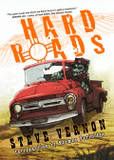 Gray Friar Press / July 2007
Gray Friar Press / July 2007
Reviewed by: Blu Gilliand
Steve Vernon is a hard writer to pin down. And that’s a good thing.
Take Hard Roads, for example. Two tales, two very different facets of this emerging voice in genre fiction. Both novellas are distinct in tone, but there’s enough connective tissue to make it clear these images and ideas have sprung from the same imagination. While some readers might prefer one side over the other, I can’t imagine anyone not satisfaction in one of these tales.
Start with “Trolling Lures.” This is a campfire tale on speed, a heady cocktail of remorse, discovery and the quest for redemption, couched in equal parts bedtime story and fever dream. It starts in a fairly straightforward manner: Morgan Hillman is dying of cancer, running away from the pain of his disease and of some terrible incident, the memory of which he has mostly blocked out. He’s got the spirit of a dead woman riding in the backseat, and he’s heading for the hills where he plans to commit suicide.
That’s when things go decidedly off-kilter – both for Hillman and for the reader. We’re talking possession, undead Mounties, talking coyotes, and trolls. This is surrealism personified, and if you’re into that sort of thing, Vernon has a treat for you. If you’re not, skip ahead to the second half of the collection, “Hammurabi Road.”
“Road” starts out with four guys in a pickup truck – three crammed into the front seat, and one duct-taped and tied in the back. This is where Vernon’s natural storytelling ability really shines – he perfectly captures the crass and crude voices of a bunch of working stiffs out to get them some frontier justice.
Tyree, the unfortunate fellow who’s hog-tied and along for the ride, is a suspected arsonist, allegedly responsible for a hotel fire that killed the brother of one of these men. Satisfied with the evidence but disgusted with the lack of retribution, this batch of railroad workers head out for an isolated stretch of track deep in the wilderness, where they have a sentence of their own to carry out. But God (or fate, or perhaps Mother Nature) has other ideas, which are soon manifested in the form of a big black bear.
There are touches of the supernatural in this tale, but for the most part “Hammurabi Road” remains grounded in realism. The dynamics of the group and their single-minded pursuit of revenge are fertile ground for suspense, not to mention a few doses of deftly handled humor. By the time this tightly wound group of would-be executioners begins to unravel, Vernon has snared the reader in his trap. Like all four of these unfortunate souls, you’ll have no choice but to march through to the bitter end.
For this reviewer's money, “Hammurabi Road” is far and away the best offering in Hard Roads, and may be the best thing Vernon has published thus far. This story alone makes the collection a worthwhile purchase.
Purchase Steve Vernon's Hard Roads.
Gleefully Macabre Tales / Jeff Strand
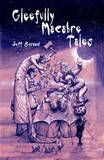 Delirium Books / February 2008
Delirium Books / February 2008
Reviewed by: Michele Lee
While many writers strive to establish themselves by spreading their stories as far and wide as possible in the early phases of their careers, there comes a time when writers with some respectable notches on their literary belts wisely create a collection for those readers coming late to the game or those who’ve just missed a few stories along the way. Collections are a perfect opportunity for genre fans to glean bits and pieces of a writer they may have glossed over in a table of contents or bypassed on a bookstore shelf.
Gleefully Macabre Tales, Strand’s first such collection, brings together thirty two of the dark scribe’s stories in a single volume for the first time. Strand's stories are often fast reads, even the longer ones. Generally, the stories contained within fall into one of three main categories.
The first category of stories consists mainly of tales of Strand’s trademark silly and gory variety. Stories such as "Really, Really Ferocious", "A Bite for a Bite" and Strand's infamous losing “Gross Out” tales from the annual World Horror Convention contests are stylistically more slice of life than plot-based. They are the literary equivalent of junk food; they taste good but are essentially empty calories.
At first glance, the second category of Strand's work represented here appears to be much like the first, but upon closer inspection, the reader will find something deeper. "High Stakes", for example, is a story that begins with a man winning a free game on a very special slot machine and ends with a pointedly insightful commentary on human nature. "Sex Potion #147" takes aim at human compulsions by telling the story of a sexually-deprived woman who uses alternative means of attracting partners only to discover that not all people love or lust in the same ways. Not even the obvious negatives of using a gypsy- made sex potion deter her for long.
In the last category, readers will find stories that aren't meant to be funny at all, or use only the slightest touch of humor to draw them into something quite serious. "Special Features" is a story told entirely through dialog that starts as a director's commentary on a movie – one that turns out to be a snuff film. "The Three Little Pigs" is a dark take on the increasingly time-softened fairy tale that harkens back to the Grimm Brothers roots of stories like "The Juniper Tree". Even "Everything Has a Purpose", which starts out in much the same way as some of the more comical tales, hides an ending that is less gallows humor and more profoundly disturbing.
Strand's stories in Gleefully Macabre Tales also run the gamut of genres - from the western-flavored “Them Old West Mutations", in which monstrous cockroaches devastate a town, to the more mainstream "Glimpses", in which the author peeks into a pair of characters' lives and reveals that kids often grow into terrible people. Strand has even included a short script, "Munchies" - the bemusing tale of a cannibal on a blind date - and a story aimed at young adults, “Calling Mr. Potty-Mouth".
Strand's creativity is on full display in stories such as "I Hold the Stick", the tale of a sadistic, narcissistic man who reins over an amusement park ride line, and "Howard Rises Again", a Christmas-themed story featuring a most memorable villain (think iconic 7-11 concession here). Several of the stories included in the collection are true marvels of writing, such as "Wasting Grandpa", a nonstop tale that blends Murphy’s Law and murder, or "The Bad Man in the Blue House", a genuinely creepy tale of stalking and psychosis.
Strand uses the short story format to shock, humor, and terrify his readers. From the sheer meanness of "The Bad Candy House", the tale of a elderly man at war with the neighborhood kids over Halloween pranks, and “Mr. Sensitive", in which a man is punished for his lothario ways with testicular torture, Strand's stories don't just play with words ("Quite A Mess"), pop culture ("Roasting Weenies by Hellfire"), and human behavior ("Abbey's Shriek") - they also play with readers themselves, using them as tools, even to the point of including them in the story ("Brainbugs") or making them work for their terror (as in the interactive decoding tale “Secret Message”).
Gleefully Macabre Tales, a collection likely to achieve cult classic status for good reason, is a must-buy for horror lovers.
Purchase Jeff Strand’s Gleefully Macabre Tales.
Waiting For October / Edited by Bill Breedlove
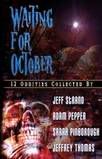 Dark Arts Books / April 2007
Dark Arts Books / April 2007
Reviewed by: Vince A. Liaguno
In his uneven introduction to Waiting for October, editor Bill Breedlove pledges that this anthology from promising new small press publisher Dark Arts Books doesn’t boast any of the usual horror suspects and, instead, offers up “very disturbing tales that showcase the full range of what constitutes a horror story.” While this reviewer isn’t sure that the twelve stories here – three each from authors Jeff Strand, Adam Pepper, Sarah Pinborough, and Jeffrey Thomas, respectively – show the genre’s all-encompassing range, Breedlove hits the mark with his “disturbing” description.
Jeff Strand’s humor-tinged horror brand is a fitting kickoff for an anthology promising oddity, and one wonders if the author writes with his tongue literally planted in cheek. Up first is the squirm-inducing “Gramma’s Corpse”, in which Strand offers up a twisted and downright ghoulish variation on the idea of parental discipline. This one comes complete with a deliciously macabre Creepshow-style ending. An elderly widower declares war on the neighborhood trick-or-treating army in the Halloween-themed “Bad Candy House”, in which Strand shows the darker lengths people will go when pushed just far enough. In his third offering, Strand uses a variation on the first-person POV to tell the story of a bizarre diner massacre that may or may not have actually occurred in the appropriately-titled “Here’s What Happened…” The attention deficit disorder-like, one-sided conversation device could play gimmicky elsewhere, but the edgy narrative perspective seems especially well-suited for Strand’s unique brand of storytelling here.
Unlike the better known Strand, with whom one knows what they’re getting, Adam Pepper is an exercise in dichotomy. “The Admirer” starts off his trio of contributions weakly, with a baffling two and a half-page story of obsession populated by personified inanimate objects – including a tree, a trash can, and a window - and sixteen exclamation points (!). Unfavorable first impressions aside, Pepper comes through commendably with the strongest offering of the entire anthology with “Buried a Man I Hated There”, in which a grieving father makes an annual pilgrimage to the site of his family’s death. Subtle, beautifully layered, and written in shades of melancholy, “Buried” is a remarkable achievement in short fiction and haunts long after the last word. In “Old Maid Syndrome”, Pepper admirably tackles a female POV with mixed results. While at times spot-on with his female characters (as at the beginning of the story when two longtime BFF’s are having a phone conversation about a third friend’s impending marriage), Pepper misfires at other times like when his adult first-person narrator has this schoolgirl-ish observation when meeting a potential suitor for the first time:
Emmanuel extended his hand and when I touched it, I think I melted. He was so warm and firm, yet gentle at the same time. He kissed the top of my palm lightly, without puckering or leaving an wetness. Me on the other hand felt moisture between my legs and under my arms instantly.
Ultimately, Pepper’s twisted tale of organ thievery suffers when his solid set-up deteriorates into a raunchy, one-note ending. Placement of a story in an anthology is key, and Pepper would have been better served had Breedlove saved the far superior “Buried” for last.
The UK’s Sarah Pinborough brings her own sense of the peculiar to her triple play, proving that she can ably match the weird quotient of her male counterparts. “Express Delivery”, a cautionary cloning tale meets The Sopranos, is a story of debt repayment and second (and third) chances infused with an insightful commentary on the dangers when escapism tips the scales of reality. In “The Fear”, Pinborough confronts the insecurities of writers and explores the career polarities between selling out and vision when an alcoholic writer finds himself caught in a looping reality with the devil. With its decidedly 1408 vibe, Pinborough ably demonstrates that good things can sometimes come in the smallest of packages – here in about 4 ½ pages. Pinborough next channels her inner Brian Keene in “Crystal Carla”, a gory, meth-fueled zombie yarn. Tables are turned on a drug dealer in this mosquito-swatting swampland tale of one junkie’s ultimate revenge from beyond the grave. Guaranteed to raise the squirm quotient exponentially.
Jeffrey Thomas closes the collection strongly with three of the most inventive offerings. In “The Hosts”, children are overcome by thought and behavior-controlling parasites. What first appears to be an effective Village of the Damned meets The Puppet Masters/Night of the Creeps hybrid, however, soon turns out to be a poignant and perceptive observation on the resiliency of parents coping with special needs children. “Adoration”, another standout in the collection, is the genuinely creepy tale of an undead celebrity brothel in which clients with the means can have the night of their dreams with the likes of Marilyn Monroe and Grace Kelly. No one is off limits or unattainable in this dilapidated zombie-esque bordello deep in the woods – even James Dean and Elvis Presley are willing switch hitters in death. “Star Est Control” visits a futuristic world in which even affordable housing comes at a price – namely haunting advertising screens on every inch of available wall space. It’s an interesting surrealistic oddity of a story – one fitting to bring the collection to its close.
Playing more at times like exercises in surrealism than straight-forward horror, Waiting for October is meant to embody the literary equivalent of “the quaint sampler candy box” and offers readers a nibble of the work of an assortment of dark scribes. Like a Whitman’s sampler, it’s an experiment with mixed results – some nut clusters (Strand), the occasional cherry cordial that offsets too many vanilla butter creams (Pepper), some pleasing truffles (Pinborough), and some gourmet Belgium chocolates (Thomas). On the strength of Pepper’s “Buried a Man I Hated There” and Thomas’ “Adoration” alone, Waiting for October is worth a few post-holiday calories.
Purchase Waiting for October, edited by Bill Breedlove.
Five Strokes to Midnight / Edited by Gary A. Braunbeck and Hank Schwaeble
 Haunted Pelican Press / November 2007
Haunted Pelican Press / November 2007
Reviewed by: Blu Gilliand
It’s a great idea for an anthology: take four established genre authors plus one relative newcomer, let them pick whatever individual theme they would like to write about, give them a word count and turn them loose. One story, five stories – it’s up the author. Such are the ground rules for Five Strokes to Midnight, the first publication from Haunted Pelican Press, and while the individual results are mixed, the overall package is a success.
Tom Piccirilli opens the book with two stories on the subject of loss: “Loss” and “Bereavement.” The latter is a devastating meditation on coping with the grief of losing someone you love, and how the ways we cope affect those around us. As is usual with his work, Piccirilli leads you almost to the end of the path before you realize you are going somewhere completely different than where you first thought. It’s a touching and powerful tale, and the one my thoughts kept returning to after the book was done.
Equally powerful is the middle story of Gary Braunbeck’s trio on hauntings, “The Queen of Talley’s Corner.” This simple tale of a lonely woman haunted by her one great love sums up much about the power the past holds over us. Despite her current circumstances, the story’s “Queen,” Miss Hattie, lives each night as she did in her heyday – strolling the streets resplendent in her finest, a woman proud and in love with the man at her side. Braunbeck’s affecting prose puts you right there with them, right up through the inevitable end.
Deborah LeBlanc follows with two stories about curses. “White-Hot” and “Bottom Feeder” are both straightforward cautionary tales of voodoo, black magic, and the consequences of dabbling in such. However, while the plots may not be the most original, these stories are distinguished by LeBlanc’s captivating narrative style. The characters, language and scene-setting are so lively and natural that the pages practically sweat. These two stories were my first taste of the author’s work, but they certainly won’t be the last.
Hank Schwaeble, who co-edited the book with Braunbeck, is up next. Schwaeble is the new voice among the veterans, a fact that is unfortunately underlined after following such a magnificent trio. His stories, each of which follow the theme of demons, are not bad – they just don’t quite stack up to the company he’s keeping here. There are definite signs of promise, particularly with the bizarre “Bone Daddy,” but the other selections in the book simply overpower him.
The book gets back on track with Christopher Golden, who gives us three stories touching on the traditions of folklore. Golden captures the theme perfectly with his tales of legends and ghosts. His (and the book’s) final piece, “All Aboard,” serves as the perfect bookend, touching on the theme of loss that opens the collection. This story of parents dealing with the ultimate tragedy features a final line of dialogue that nearly brought me to tears with its power.
All in all, Five Strokes to Midnight is an excellent collection. With powerful stories by five extremely talented authors, and companion art pieces by Ashley Laurence (best known for her role in the film Hellraiser), this is a worthy addition to the shelves of anyone who appreciates good, thought-provoking writing.
Purchase Five Strokes to Midnight, edited by Gary A. Braunbeck and Hank Schwaeble




